Entering the Dojo
Life Lessons From the Martial Arts #1
By Paul 'Batman' O'Brien
B.A., N.C.E.H.S., Dip. Acu., Adv. Dip. OBB, Cert Clin. Med. Pn1, PN-SSR, PN-NCA, M.AFPA, M.ETCMA, M.C.Th.A.
Entering the Dojo is the first step in learning the martial arts. And this simple act, a single step, can teach you a great deal about making your life a lot easier: how to get out of the grey zone, separate work and home life, rev your self up, decompress, how to focus and a whole lot more.
In this article series, part of the Fighting Tengu Podcast series, I'll introduce you to some key concepts from the martial arts I and Stephen Milton, my co-host practice, and share with you practical tips on how to implement these ideas into your daily life.
Entering the Dojo
Our practice in entering the dojo (training hall) begins and ends with Shintō rituals - most notably the Rei (bow). In Musō Jikiden Eishin-ryū and even within modern ZNKR Iai we begin with a bow to the front.
In a traditional dojo, the call is "Kamiza ni Rei". This is a command to bow to the Kamiza or Kamidana. The Kamiza means "upper seat" or “spirit seat”. The Kamidana is a small wooden shrine, (how big and how small depends on the dojo) often found in households throughout Japan that acts as a substitute for a large Shintō shrine on a daily basis. It is a sacred space, creating a separation from the "ordinary" world much like the dojo itself. In each case the object of worship is considered a sacred space inside which the kami/spirit actually dwells, being treated with the utmost respect. Beside the Kamidana are often photos of the ryu's founder or important teachers. The bow pays respect to the spirits of the founder, the teachers and students who have gone before us and to the kami of the ryu itself.
The kami being present in the dojo then dictates many other aspects of the rituals before and after practice. For instance, when entering the dojo we do so with the left foot, as it means we cannot draw against the kami or our fellow students. We position the blade so that the tip does not face the Kamidana if we set it down to change weapons or to rest. We position ourselves in practice so that we do not turn our backs to the Kamidana during our forms, or expose the sole of our feet to the Kamidana (to do so would be disrespectful).
We perform To-rei in the dojo. A bow to the sword itself. Recognizing its kami and how it is the tool through which we perfect our character. It's also an acknowledgement of the danger in using one and a moment to pause and reflect on this, to prepare for the serious undertaking of training.
We bow to each other before and after paired practice. This is again a sign of respect and recognition for our training partner to whom we trust our health and safety too and they entrust us equally with ensuring they come to no harm.
This deep respect for those who have gone before us, our training partners, the place we train, the sword and the art itself is all derived from Shintō traditions.
All of these acts of ritual in entering the dojo are “On Ramps” and “Off Ramps” to mentally prepare you for what is about to happen in the dojo and leave the “normal world” and then decompress from what has happened and re-enter the normal world.
On Ramps and Off Ramps
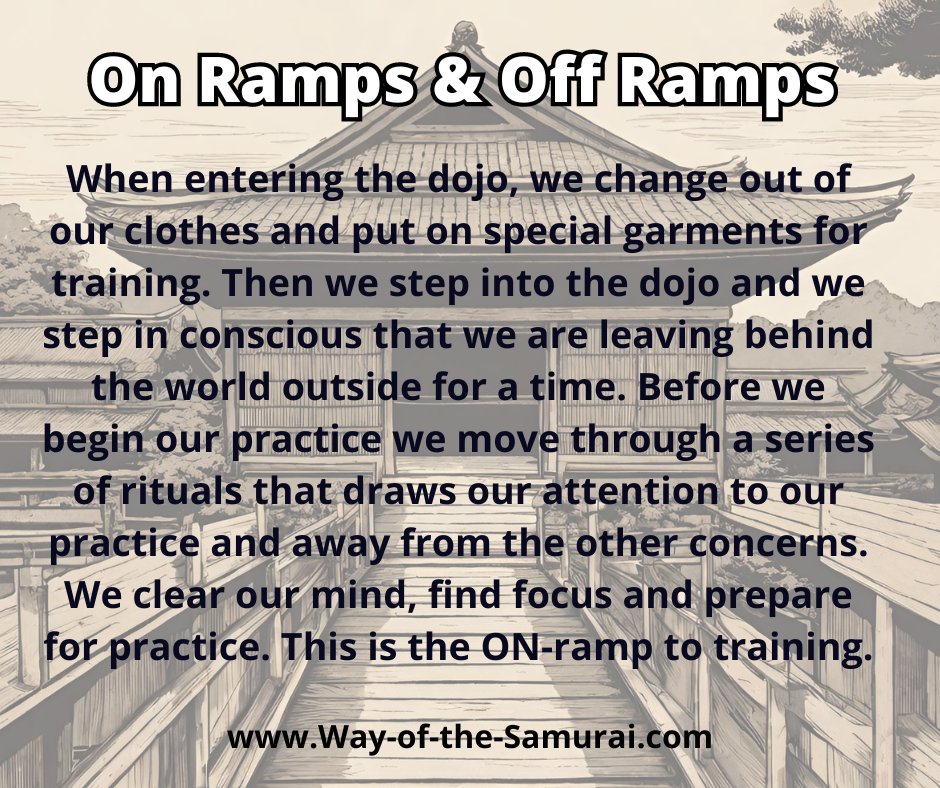
Throughout the world there are places called Blue Zones. These are places where the avg. population in that area live into the 100's and do so in great health. Their cognitive and physical decline is minimal. As expected there are many such places in Japan - but interestingly it is not confined to Japan. Such Blue Zones exist all over the world. So, it's not a geographic factor.
Upon realizing that it wasn't a geographic, nor an exclusively genetic factor researchers started to explore this in detail and discovered certain key things that each of these Blue Zones had in common. For instance, people in these communities stayed active after retirement, they became involved in charity or community work - giving them purpose. They were all involved in the rearing of children in some capacity, either babysitting their relatives or through the community. They all participated in ritualized recreation; this could take the form of meditation, prayer, painting, gardening, tea making etc. Another thing they all did was separate work and recreation.
Crucially they had an ON Ramp and an OFF Ramp to signify the beginning and end of work and recreation. And this for me has been one of the key takeaways from the dojo that I brought with me into my daily life. I recommend this to all my patients, and it is one of the key's to my incredible level of productivity. It's no surprise then that top entrepreneurs, CEO's and coaches such as Tony Robbins, Eben Pagan and others all teach this as a fundamental skill too.....
When entering the dojo, we change out of our clothes and put on special garments for training. Then we step into the dojo and we step in conscious that we are leaving behind the world outside for a time. Before we begin our practice we move through a series of rituals that draws our attention to our practice and away from the other concerns. We clear our mind, find focus and prepare for practice. This is the ON-ramp to training.
After our practice, we acknowledge again the practice, our partners, the sword, the art, those who have come before and step back into the outside world. This is the OFF-ramp the de-escalation from training. I greatly like this moment of separation between, a chance to order myself and sink into a different way of being and so I take this into the world outside the dojo and developed ON-RAMPS and OFF-RAMPS that signify the start and end of my work, the clear line between me time and work and my family.
In this way I am more focused and fully present in my work, not thinking and wishing I was with my family and when with my family and friends fully present with them and not thinking about work. By setting up clear rituals before and after I can prevent a muddying of the waters and my attention.
I'd like to share with you now your first exercise that will help you establish a similar ritual.
What's Your Entrance Music?
Music is a super quick easy emotional trigger that you can use as part of your On Ramp and Off Ramp Ritual. There is a reason every professional wrestler, boxer, MMA superstar comes out to entrance music. Think your National Anthem, Hero Theme's, Opening Credits and Closing Credits of a TV-show or Movie.
Music can quickly change your psychology, emotional state and you can use this to signify the start of and end point of a given activity.
Music is for me incredible motivating and triggers that higher self state. There are certain songs that just make me move and smile and feel energized and awesome - a lot of them are Movie and 80's related. Before i used to go into work when I managed a fitness company I'd stand outside the building, throw on my head phones and hit HBK, Shawn Michael's WWE entrance theme, open the doors and literally do his entrance.
Before I see my first patient in the clinic I listen to a particular track. I currently signify the start of "work-at-home" time with the "Who's the Bat)Man" Theme from the 2017 Lego Batman Movie.
I know you have a “power song”. I’ve seen you belting it out in your car as you whiz down the motorway.
Music can be a great trigger — it can instantly change our thoughts and feelings.
So what I want you to do is develop a roster of favorite songs that get you ready to rock.
I have multiple playlists for inducing different states of mind. I have a martial arts mindset playlist to get me in the right head space for the dojo, and to come out of it, an isometric workout playlist, a deep thinking and reflection playlist, a writing playlist and more. But you can start with just 1 or 2 songs or pieces of music.
What to Do Next
- Select 2-3 songs approximately 3-5 minutes in length that make you move, that you cannot sit still listening. They make you smile, they make you sing it when t comes on the radio.
- Place these songs in a Playlist (Youtube, Spotify, whatever phone, platform, app of your choice)
- Commit to listening to that song before you go to work and after you've completed work to bookend and draw a clear boundary between it and your home life.
- Try this for 30 days. If it works for you (and if you find the right song it's nearly guaranteed), think about expanding to create different song triggers or playlists to help intro and out-tro particular events, like training, meal time, playtime with the kids, etc.
- Subscribe to the Fighting Tengu Podcast for more awesome insights.
- Read the next article packed with more tips taken from the martial arts to help you battle the demons of daily life.
Free Samurai E-books
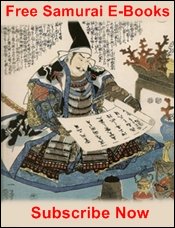
Get Free Exclusive Samurai Guides and E-books

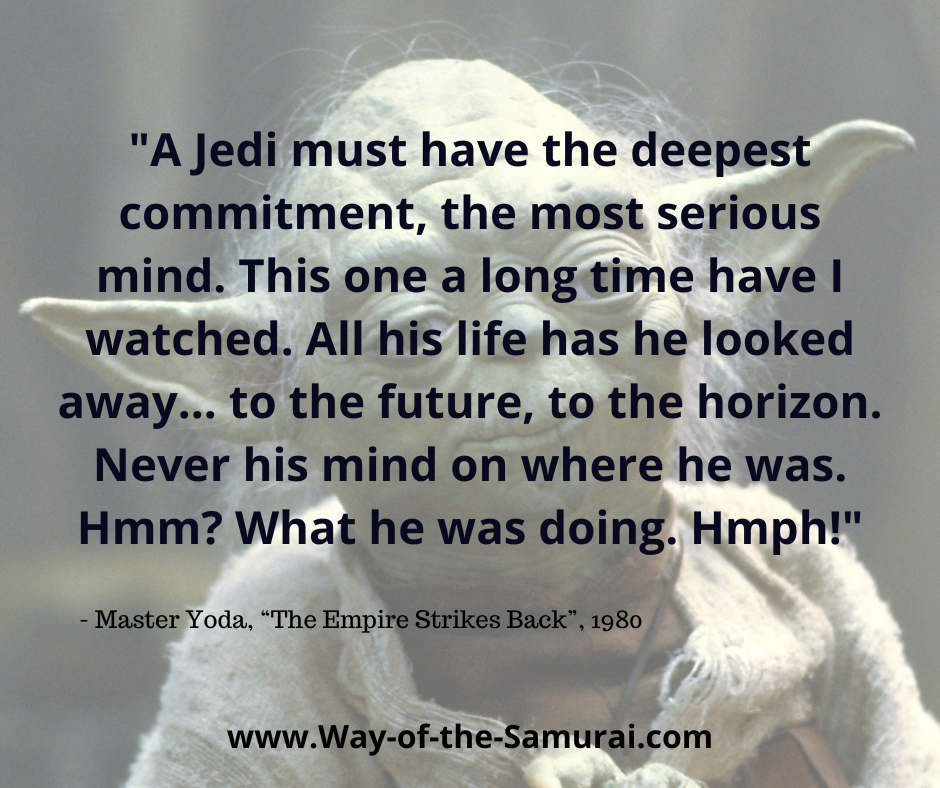
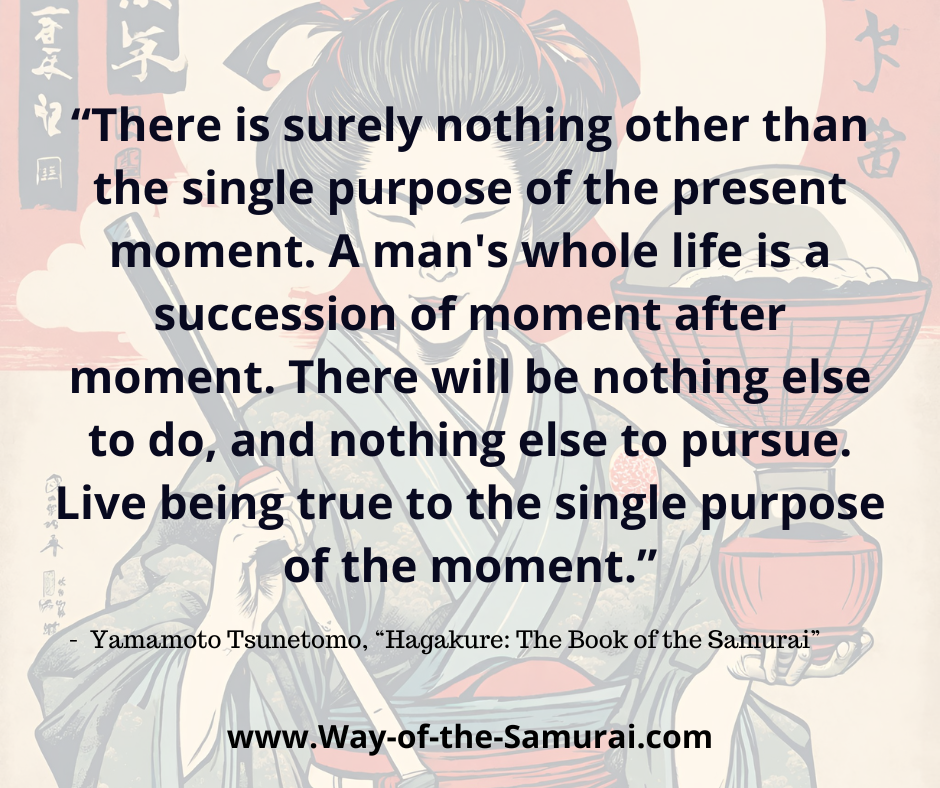




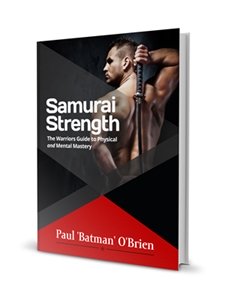
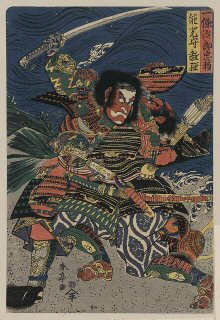
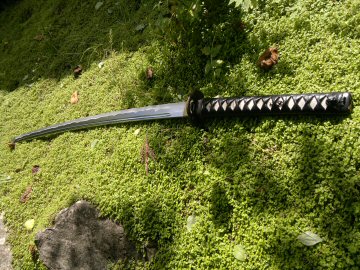
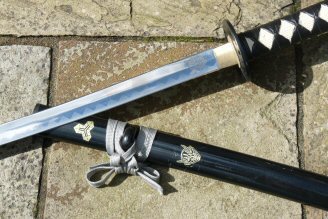
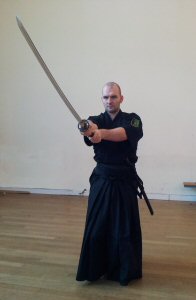
New! Comments
Have your say about what you just read! Leave me a comment in the box below.